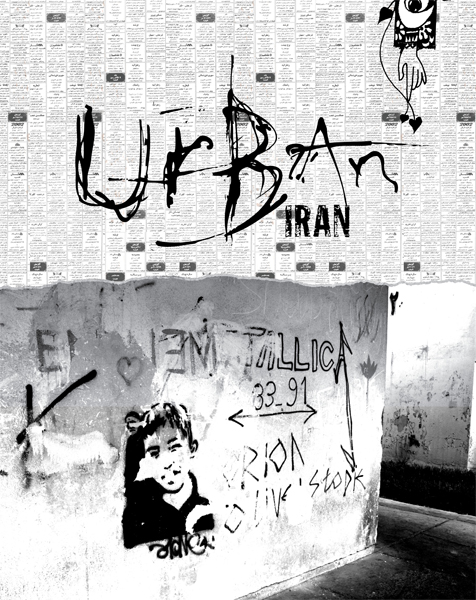
Picture from "Urban Iran"
Urban Iran
Mark Batty Publisher
www.markbattypublisher.com
130 pages, hard cover, $27.95 US/ $32.95 CA/
Urban Iran is a beautiful book. Its eye-catching stark black and white hard cover with embossed lettering and mixed patterns invites the hand to a pleasant touch. A large part of the book is devoted to the art of a children’s book illustrator who was admired by the artistic director of the book. The images are magnificent examples of the art of an era that saw a splash of the creative scene in art galleries, books, and on the stage.
The book is a celebration of the “golden age” of the arts in Iran; the days when beautiful art and music flourished. Those were the 60s and 70s of course. Under the vigilant eyes and ears of the Shah’s oppressive regime there was little that could grow and flourish. Books were censored, arts and writers jailed and tortured, publishing houses shut down and voices silenced. For a brief period in the last two decades of Shah, oil revenues and international interest gave rise to an active art scene. It was a short-lived burst of creative energy that was suddenly aborted when the men of cloth pronounced it un-Islamic. With the end of that era, people went back to decorating their homes with cheap Chinese posters of Eagle Brand tea imitating the art of Gainsborough and postcards of the prophet and his successor saints.
In 1979 there was a change. Shah’s monarchy ended and the Islamic Republic took the throne. Over the past 30 years, the Islamic regime has failed to prove it is any more open to intellectual freedoms than Shah was. As a matter of fact, decrees from factions in power at times have openly opposed the idea of democratic freedoms based on the “ideological” argument that democracy is a western concept and is not mentioned in the Qur’an.
Music became “corrupt” and art became simply “blasphemy”. If you had something to say, you should whisper it in your daily prayers. The middleclass intelligentsia that had critiqued the undue influence of the west on the Iranian culture, was now bullied out of the political scene by the clergymen who had not read the books, nor had they heard the music, but had deep roots in the neighbourhood mosques. They promoted themselves as the only option out of the “modern corruption” and rode the waves of the rebellion into the royal palaces.
The book is a testimony to the fact that despite the regime’s best effort at closely controlling all modes of cultural expression, the young under-thirty generation, naturally thirsty for inspiration and ways of expression, is looking for models to emulate or icons to unseat. Bored and unhappy with the deserted scene, some of them look to the bygone years. And for others, emerging from the fanatic repression means reaching for the West for inspiration; ironically the opposite of the very same thing that had united their “revolutionary” fathers for a while. Heavy metal, Goth style, and graffiti have taken root in the land of meditative music and tiled architecture. Various artists desperately seek validation and a sense of belonging by producing work that would win in festivals abroad but is soon forgotten at home. Alone, the spray-paint artist somewhat glorified in the book, uses English words or slang in his street graffiti. How widely is he understood? Does he keep his message private in a public realm to show off his membership in the elite club of those who “dig it”?
In other words, Urban Iran is in part a brief and hasty report on the art and music produced in basements or back alleys by those rejected by the mainstream media and in part a shallow social commentary. These artists find company in the long line of those the masses on the street never adopted as their own; from the medieval illuminators of the Islamic texts to the avant-garde urban artists under the Shah, to the hiphop/metal/graffiti art/music scene mentioned in the book. It is ironic that most of the art and music discussed in the book bear strong cultural meanings for the Westerner; whether the artists manage to use the existing popular art forms for fresh and locally significant content remains to be seen. For now, private basements hold the practice sites for metal and hiphop, or for risky graffiti, or riské parties.